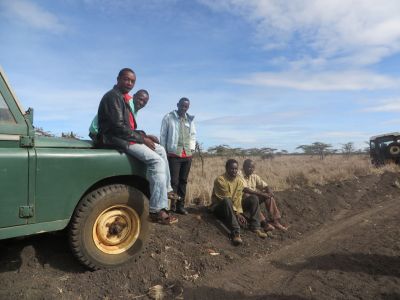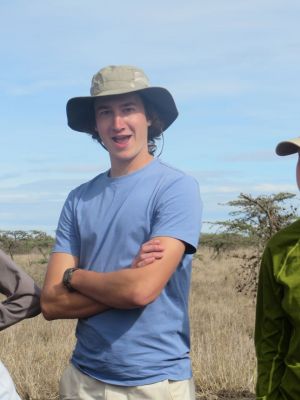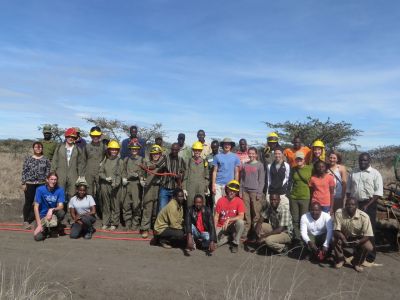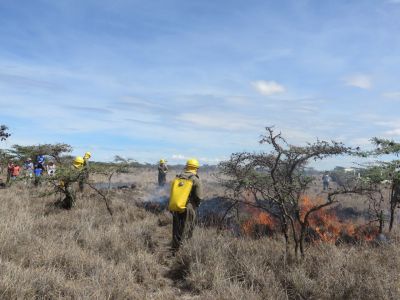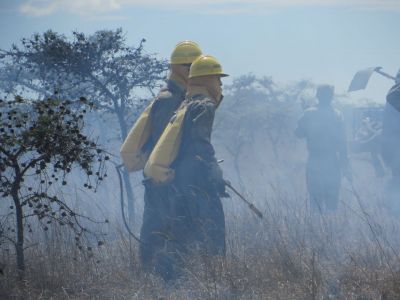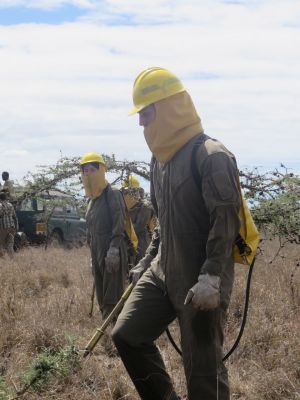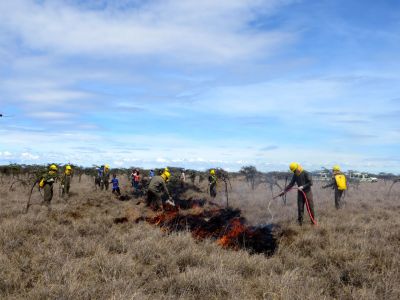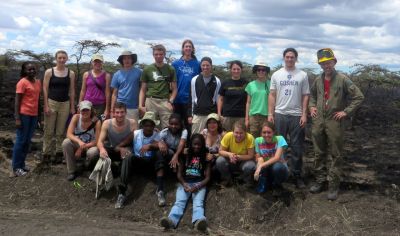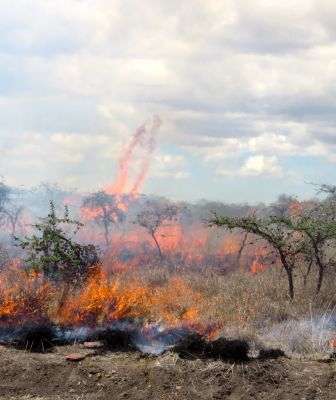
May 3rd, 2014
This was our third day in Laikipia county at Mpala ranch, and the beauty, significance, and novelty of this place is no less awesome than when we arrived. The wonder of Laikipia is compounded by the fact that humans first evolved in savannah ecosystems like this one over 100,000 years ago. About 60,000 years ago, these early humans maintained species diversity and the balance between woody and grassy plants by periodically burning the savannah. Today, we had the opportunity to participate in one of the oldest human traditions of burning savannas as part of a research project. We recorded some pre-burn data yesterday, and will return on Monday to record post burn data, in the hopes of correlating changes in the data as effects of the burn.
Burning a savanna is easy. However, conducting a controlled burn on a specific section and ensuring that it will not spread involves quite an orchestration. For our burn of one hectare (about 2.5 acres), there were about 40 people present, including many Mpala employees. A group of students donned fire-resistant suits and backpack sprayers to control the edge of the burn. The first step was creating a burnt border, a “black line” around the edge of the burn site in order to create a buffer that would prevent the fire from spreading. This involved Jacob Penner spraying water in two parallel lines while Ryan lit sections of the grass. The rest of us with backpack sprayers and “swatters” followed behind, extinguishing sections of the black line as necessary, often at the instruction of the experienced Mpala staff.
After about two hours, the preparatory burns were completed, and Ryan and our co-professor Duncan Kimuyu lit the head fire (the main fire which burns the rest of the plot). It was a magnificent sight. The fire lasted about five minutes, with flames as high as 15 feet. After the fire burned down, smoldering trees and dung were extinguished to prevent more fires from spreading. The whole process is somewhat physically demanding, and we spent the rest of the day back at camp. On Monday, we will return to study some of the effects this burn produced.
– Henry Stewart – 2014 GC





